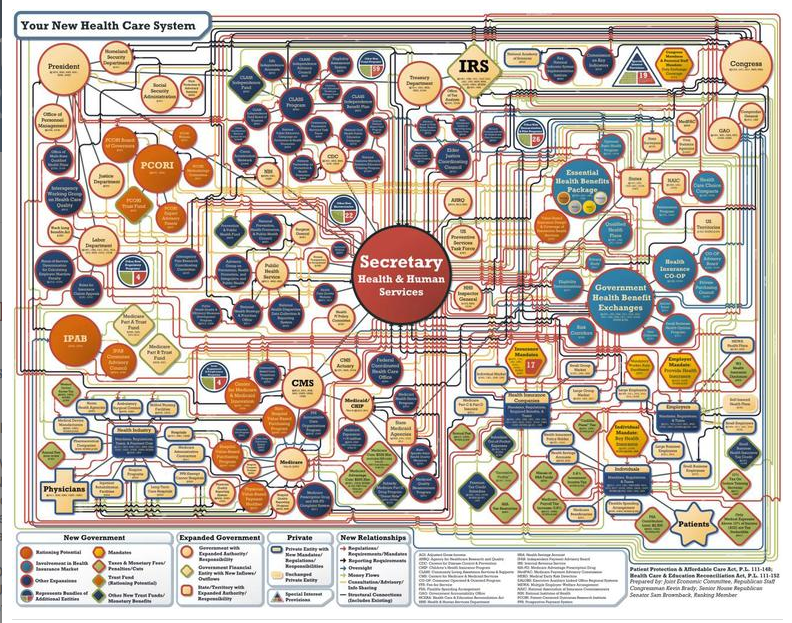I received an email newsletter from Humana with a lot of information on what was going on with health reform and what not. Below are 2 sections from Humana’s newsletter I thought were worth mentioning. At the bottom is a nice graph someone gave me on what health reform looks like.
Why are costs increasing?
A couple of recent studies offer insights into rising health care costs.
The National Institute for Health Care Management released “Understanding U.S. Health Care Spending,” which uses data from 2005 through 2009. Highlights include:
- “Spending is highly concentrated among a relatively small portion of high-cost users, with just 5 percent of the population responsible for almost 50 percent of all spending. At the other end, half of the population accounts for just 3 percent of spending.”
- “Higher spending for hospital care and physician and clinical services accounted for half of the increase in total national health spending…and more than 80 percent of the increase in private insurance premiums.”
- “Rising prices per unit of service have played a larger role than rising utilization rates.”
- “Key drivers of rising unit prices and higher utilization include advances in medical technology, rising treated prevalence rates for chronic diseases, and increased provider consolidation and market power.”
- “It is clear that higher spending for hospital, physician and other clinical services is responsible for the lion's share of the growth in private premiums.”
The bad news continues on the obesity front
The seventh annual obesity report by the Trust for America's Health and the Robert Wood Johnson Foundation shows that despite the programs, policies and resources that have been devoted to the nation's obesity problem in the past few years, the epidemic continues unchecked.
Their report says:
- “Adult obesity rates increased in 16 states last year and did not decline in any.
- The obesity rate has grown dramatically. The lowest rate today would have been the highest in 1995.
- Only one state (Colorado) has an adult obesity rate below 20 percent.
- Twelve states, including Kentucky, Tennessee and Louisiana, have obesity rates over 30 percent.
- Four years ago, only one state had an adult obesity rate over 30 percent.
- 32 states have a diabetes rate over 8 percent.
- Every state has a hypertension rate over 20 percent.
- There is an ethnic component to obesity: Rates for blacks top 30 percent in 42 states and D.C.; rates for Latinos topped 30 percent in 23 states.
- There is an education component to obesity: Almost a third of all adults who did not graduate from high school are obese, as opposed to 21.5 percent of people who graduated from college or technical college.
- There is an economic component: More than 33 percent of adults who make under $15,000 a year are obese, compared to 24 percent of those who make more than $50,000.”








